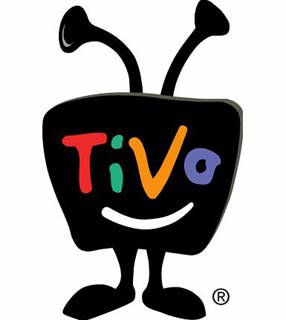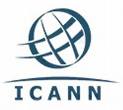 I’m fascinated by the firestorm that has erupted over what sounds on paper like the most boring combination of a legal and technical discussion: the recent appeal by Hollywood for a waiver from the FCC’s Selectable Output Control (SOC) rule.
I’m fascinated by the firestorm that has erupted over what sounds on paper like the most boring combination of a legal and technical discussion: the recent appeal by Hollywood for a waiver from the FCC’s Selectable Output Control (SOC) rule.
First a little background, greatly simplified. (Those wanting the gory details can read the excellent coverage of the story over at Ars Technica.) Older television sets receive cable programming through analog component wires. Newer TVs include the old analog interface but also added digital ports, such as HDMI, that can reproduce a higher-quality picture.
The SOC rule, adopted in 2003, prohibits content providers (including cable and phone companies offering television content) from manipulating transmissions in a way that turns off or otherwise disables the analog ports, which would have forced consumers either to use the digital interface or, if they don’t have those ports, buy a new set that does.
In addition to quality, the other relevant difference between analog and digital outputs is that the latter can be programmed to obey increasingly sophisticated forms of digital rights management (DRM), used to limit the reception, quality and use of received content. HDMI interfaces, among other features, support signal encryption that ensures the output is being directed to an authorized device—a television set registered for on-demand viewing, for example.
The MPAA has asked the FCC for a waiver to allow studios to broadcast new movies before they are made available on DVD. To make such broadcasts more secure, the MPAA wants permission to block the signal from being output through the analog interface. While digital outputs can be hacked and DRM bypassed, the MPAA believes that the most likely and most dangerous form of piracy of these early releases would come from users with active analog ports–what is sometimes referred to as “the analog hole.”
If the waiver is granted, content providers would be able to disable analog ports when transmitting early-release movies to the set. The digital ports could then be manipulated to ensure that the programming was not copied in violation of the new service’s terms.
The MPAA’s request is being supported by content providers including cable TV, satellite, and phone companies, as well as some device manufacturers. The principal opposition is coming from the Consumer Electronics Association, the main trade group for device manufacturers, as well as a coalition of public interest groups including Public Knowledge and the EFF. (See CEA President Gary Shapiro’s open letter to the FCC on The Huffington Post and John Bergmayer’s “SOC in Context” at Public Knowledge, as well as Ars Technica’s Matthew Lasar’s response to the cable industry.)
This is not an open-and-shut case, though both sides would like to characterize it as such. The objectors argue that consumers who only have analog outputs (25 million, according to CEA) should not have their TV’s “broken” by SOC, in essence forced to upgrade to newer TVs if they want to watch early releases of new movies.
They also point out the there is no evidence that content piracy has anything to do with home viewers intercepting transmissions and translating them to media or file-sharing copies through analog interfaces or otherwise; that, indeed, the most significant source of piracy for new movies comes from insiders who get hold of production copies before or soon after movie releases.
The public interest groups are particularly concerned that a SOC waiver here is at best a Trojan Horse, giving the entertainment industry a foot in the door to control the use of more kinds of broadcasts, including those for which today there are no or fewer restrictions.
The waiver could be a start, in other words, toward more restrictive content limitations, along the lines of so-called “broadcast flag” technology embedded into TV sets that Hollywood had earlier convinced the FCC to mandate. (A federal appeals panel laughed the FCC out of court on that one, reversing the Commission as wildly out of its jurisdiction.)
Ultimately, the public interest groups believe, the SOC waiver could lead to the end of long-established rights for viewers to record and time-shift programming, a right that the Supreme Court underscored nearly 25 years ago when the same parties asked for a ban on VCRs.
The requested waiver, however, doesn’t apply beyond the “narrow” exception of the early-release movies. (A number of companies, including TiVo, have urged the FCC to allow the waiver, but only after significantly tightening up just how narrow the exception really is.) And supporters point out that without the SOC waiver that new service simply won’t be offered, harming everyone.
As the National Cable & Telecommunications Association (NCTA) put it in a letter to the FCC, “MPAA has sought waiver of the ban on SOC to permit [content providers] to provide consumers with more viewing options, which can only be made available if the ban on SOC is waived.” (emphasis added)
The implication of that statement is that the SOC waiver is a kind of technological requirement for early-release movies, which isn’t the case. What the NCTA means is that without the waiver, Hollywood won’t risk showing movies before DVD releases for fear that piracy will undermine the subsequent market for media.
Well, maybe. But even absent rampant piracy, the likelihood is that DVD and other media purchases will continue to decline (see “Hollywood: We Have Met the Enemy”) and the studios will be forced into new (potentially more-profitable) on-demand and/or subscription models. Indeed, Warner Home video is already experimenting with early release video-on-demand for new movies even without a SOC waiver.
I share the public interests groups’ fears of a slippery slope. As I write in “The Laws of Disruption,” since the advent of the Gutenberg Press, content industries have demonstrated an uncanny consistency in lobbying and litigating against every new consumer technology that threatens their control over distribution and use, including several that have, ironically, saved them from extinction.
Consumers are understandably wary of promises from their content providers and the entertainment industry that a small inconvenience is needed in order to give consumers what they want. There’s something frankly irritating not so much in the argument but in the tone with which the NCTA is making its case (“sounds like a slam dunk to me, but surprisingly, some object” NCTA head Kyle McSlarrow writes. Come on!)
On the other hand, the SOC waiver, more narrowly defined, won’t take away any abilities or rights consumers have now. Though the analogy isn’t perfect, consumers who want to see HD broadcasts must buy HD television sets. The MPAA is arguing that it won’t offer pre-release movies if it can’t stop them from coming out an analog interface. (Technically, of course, they can come out that interface.)
Eventually, the 25 million analog-only TV sets left in the U.S. will be replaced anyway, and the “analog hole” will be plugged with more secure (though hardly bulletproof) digital technology. At that point the analogy is a little better: if you want the new service, you need to plug it into a port you will likely have and not one that you have but which isn’t permitted.
In the end, I’m with TiVo and Sony (both a content producer and a device manufacturer), who “now believes that under certain, very narrow, circumstances, SOC could bring benefits to consumers that on balance would outweigh any potential drawbacks.”
At the same time, I’d sure like to see Hollywood and its partners stop listening to consumers with such a tin ear. If they devoted even a fraction of the energy they put into trying to control the uncontrollable into experimenting with a holistic approach to offering access through all the channels—media, on-demand, virtual libraries, etc.—consumers are interested in, these fights could largely be avoided. Profits would be higher and more secure, and the pressure for piracy would be greatly diminished.
As Internet Research Group’s Peter Christy puts it, “The Internet is playing a fascinating role here by enabling experimentation. In the end the content owners are king, and their objective is maximum revenue capture from a menu of distribution alternatives. I think they are starting to know enough data not to act in way that will cost them money.”
I’m not quite that optimistic. But I hope he’s right.




 It’s the morning after Chairman Genachowski’s impassioned call for new FCC regulations to impose “net neutality” rules on Internet access providers. No surprise, everyone is reaching for the aspirin. Communications users have been partying like it’s 1974, when U.S. regulators finally began the painful process of breaking up the long-sanctioned AT&T monopolies on long-distance and equipment.
It’s the morning after Chairman Genachowski’s impassioned call for new FCC regulations to impose “net neutality” rules on Internet access providers. No surprise, everyone is reaching for the aspirin. Communications users have been partying like it’s 1974, when U.S. regulators finally began the painful process of breaking up the long-sanctioned AT&T monopolies on long-distance and equipment.